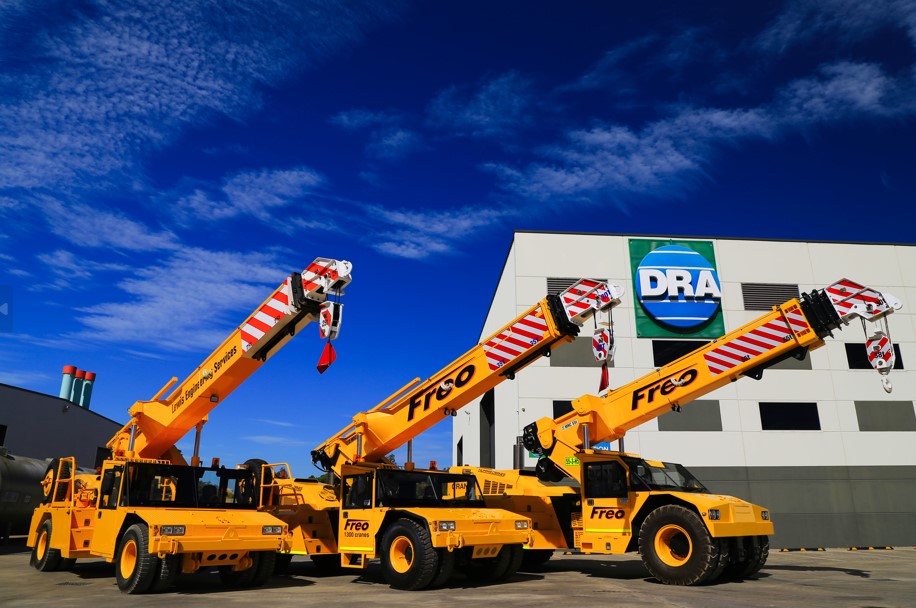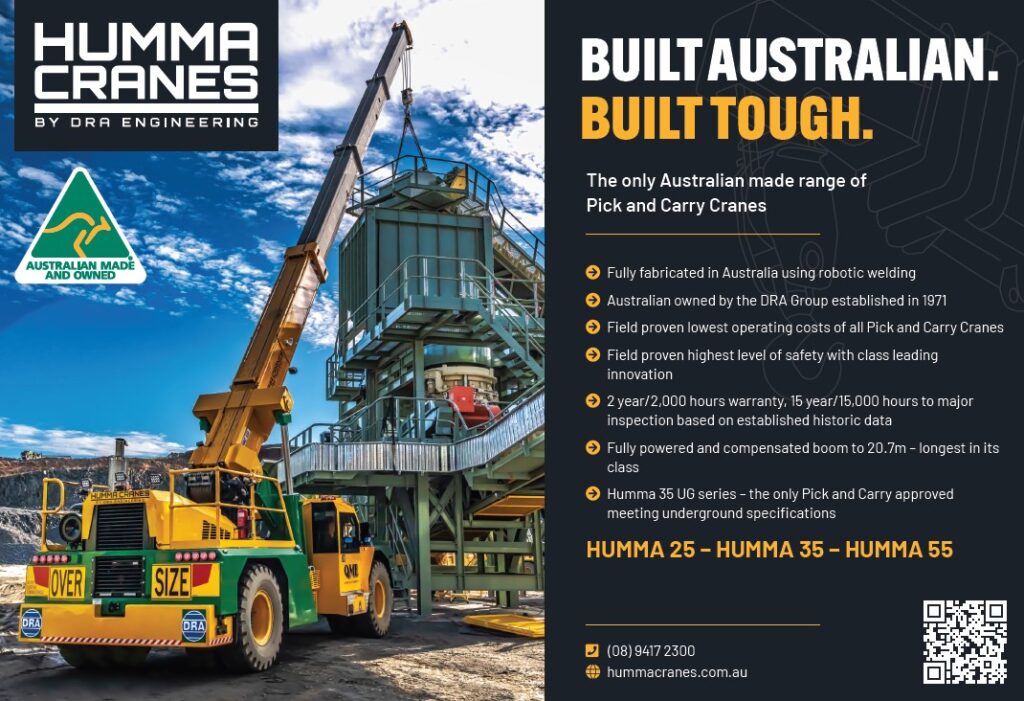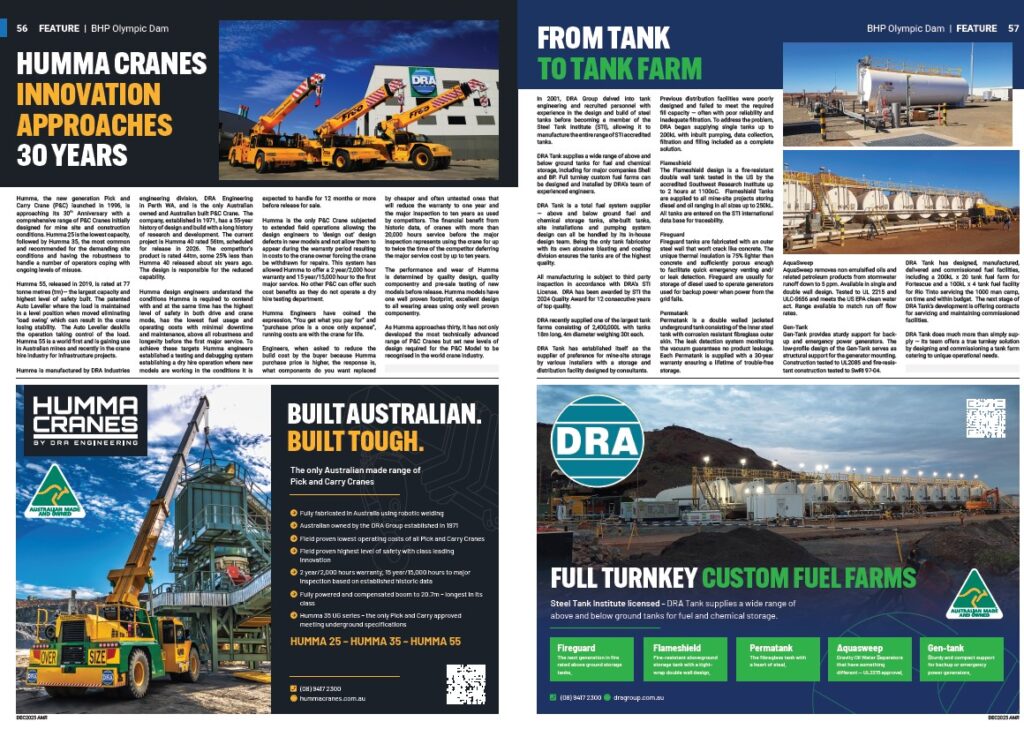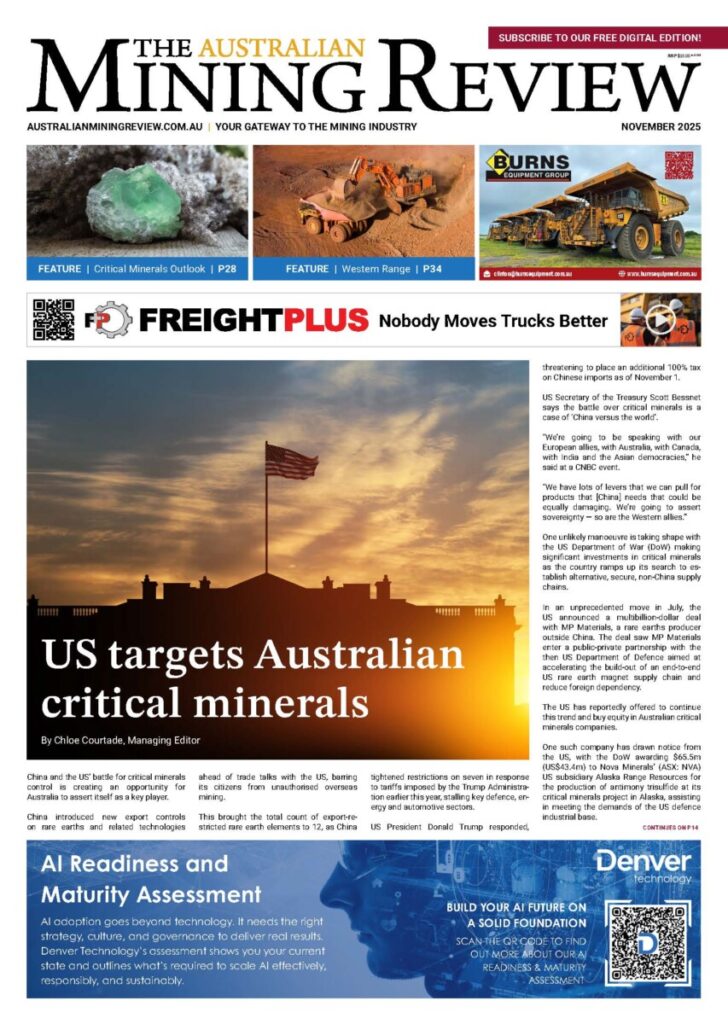Humma Cranes innovation approaches 30 years

Humma, the new generation Pick and Carry Crane (P&C) launched in 1996, is approaching its 30th Anniversary with a comprehensive range of P&C Cranes initially designed for mine site and construction conditions. Humma 25 is the lowest capacity, followed by Humma 35, the most common and recommended for the demanding site conditions and having the robustness to handle a number of operators coping with ongoing levels of misuse.
Humma 55, released in 2019, is rated at 77 tonne metres ™— the largest capacity and highest level of safety built. The patented Auto Leveller where the load is maintained in a level position when moved eliminating ‘load swing’ which can result in the crane losing stability. The Auto Leveller deskills the operation taking control of the load. Humma 55 is a world first and is gaining use in Australian mines and recently in the crane hire industry for infrastructure projects.
Humma is manufactured by DRA Industries engineering division, DRA Engineering in Perth WA, and is the only Australian owned and Australian built P&C Crane. The company, established in 1971, has a 55-year history of design and build with a long history of research and development. The current project is Humma 40 rated 56tm, scheduled for release in 2026. The competitor’s product is rated 44tm, some 25% less than Humma 40 released about six years ago. The design is responsible for the reduced capability.
Humma design engineers understand the conditions Humma is required to contend with and at the same time has the highest level of safety in both drive and crane mode, has the lowest fuel usage and operating costs with minimal downtime and maintenance, above all robustness and longevity before the first major service. To achieve these targets Humma engineers established a testing and debugging system establishing a dry hire operation where new models are working in the conditions it is expected to handle for 12 months or more before release for sale.
Humma is the only P&C Crane subjected to extended field operations allowing the design engineers to ‘design out’ design defects in new models and not allow them to appear during the warranty period resulting in costs to the crane owner forcing the crane be withdrawn for repairs. This system has allowed Humma to offer a 2 year/2,000 hour warranty and 15 year/15,000 hour to the first major service. No other P&C can offer such cost benefits as they do not operate a dry hire testing department.
Humma Engineers have coined the expression, “You get what you pay for” and “purchase price is a once only expense”, running costs are with the crane for life.
Engineers, when asked to reduce the build cost by the buyer because Humma purchase price is higher, the response is, what components do you want replaced by cheaper and often untested ones that will reduce the warranty to one year and the major inspection to ten years as used by competitors. The financial benefit from historic data, of cranes with more than 20,000 hours service before the major inspection represents using the crane for up to twice the time of the competitor deferring the major service cost by up to ten years.
The performance and wear of Humma is determined by quality design, quality componentry and pre-sale testing of new models before release. Humma models have one well proven footprint, excellent design to all wearing areas using only well proven componentry.
As Humma approaches thirty, it has not only developed the most technically advanced range of P&C Cranes but set new levels of design required for the P&C Model to be recognised in the world crane industry.

























